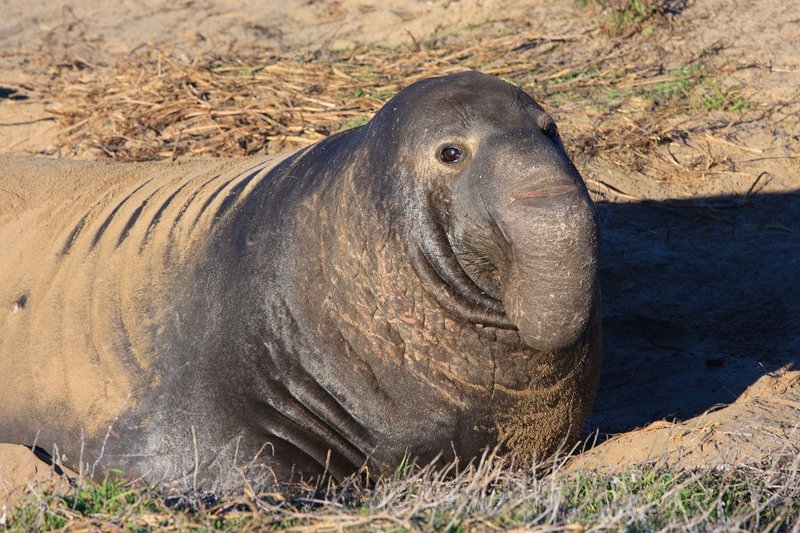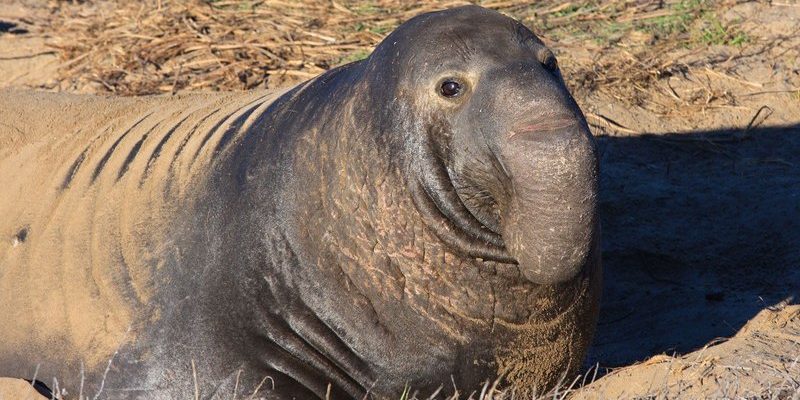
The primary threats to elephant seals arise from human activities, climate change, and natural predators. Just like us, elephants seals have their own struggles, from finding safe breeding grounds to dealing with the impacts of pollution. It’s not all sunshine and surf for these remarkable animals. So, let’s dive deeper and explore the common threats they face.
Habitat Loss
One significant concern for elephant seals is habitat loss. As coastal development expands, vital breeding and resting areas are disappearing. Imagine if your favorite hangout spot suddenly vanished. That’s what happens to elephant seals when beaches are transformed into resorts or marinas.
These seals depend on sandy beaches for birthing and nursing their pups. With fewer accessible spots, they face increased competition and stress. When they’re unable to find safe spaces, it can lead to lower survival rates for their young.
Additionally, climate change is altering sea levels and coastal ecosystems. Higher tides and storm surges can wash away nesting areas, making it even harder for these seals to thrive in their natural habitats. When their homes are altered, it’s not just inconvenient; it jeopardizes their entire lifecycle.
Pollution and Marine Debris
Pollution in the ocean poses a serious threat to elephant seals. Toxic substances from various sources—like plastics, oil spills, and chemical runoff—end up in the water, adversely affecting marine life. When you hear about seals entangled in fishing gear, it’s not just a sad story; it’s a harsh reality.
Marine debris can lead to injuries or even death. For instance, when seals accidentally ingest plastic, it can cause blockages in their digestive systems. This is like trying to swallow a rock and expecting it to pass through smoothly—it just doesn’t happen. It can lead to malnutrition or starvation over time.
Beyond physical dangers, pollution affects the seals’ prey. If fish or squid are contaminated, then the seals that rely on these food sources also suffer. This ripple effect can lead to significant declines in seal populations, showcasing how interconnected marine ecosystems really are.
Climate Change
Climate change is another looming threat for elephant seals. Rising ocean temperatures can disrupt the availability of their primary food sources, like fish and squid. When ocean currents change, it affects the distribution of these animals, making it harder for seals to find enough food.
Think about it: if the restaurant you usually go to suddenly went out of business, you’d have to adapt and find a new place to eat. Elephant seals face this challenge on a much larger scale, which can lead to malnourishment and lower breeding success.
Additionally, warmer waters can lead to more frequent and severe storms, impacting breeding sites. As strong storms hit the coasts, they can erode beaches and wash away seal pups. With breeding grounds becoming increasingly unstable, the future of elephant seals may be in jeopardy.
Human Interference and Disturbance
Humans can unintentionally cause disturbances that negatively impact elephant seals. For example, recreational activities, like boating and beach-going, can disturb these animals when they’re trying to rest or nurse their pups. Imagine trying to take a nap while someone blasts music nearby—it would be incredibly stressful!
When seals are regularly disturbed, they may abandon their breeding sites or reduce their time on the beach. This decrease in rest time means they’ll have less energy to hunt for food or care for their young. Disturbances can lead to increased mortality rates among pups, which is heartbreaking.
Moreover, in some places, there’s a lack of awareness about how to respect wildlife. People might approach seals too closely, thinking they’re cute and harmless. But this can lead to stress for the seals and push them away from necessary habitats, making survival even harder.
Predation
While human activities are a primary concern, natural predators also pose a threat to elephant seals. In the ocean, sharks and orcas are among the seals’ primary predators. For a young seal, encountering a great white shark could be a life-or-death situation.
In the wild, every animal has to be on their toes, and elephant seals are no exception. Striking a balance in the food web is essential for maintaining healthy populations. When other factors like pollution and habitat loss weaken seal numbers, it can lead to unchecked predator populations, making it even tougher for seals to survive.
But here’s the good news: elephant seals have thrived in the past, hitting population highs, and there’s hope for the future. Conservation efforts can help support their needs and rebuild populations, ensuring these gentle giants remain a part of our oceans.
The challenges faced by elephant seals in the wild are considerable but not insurmountable. With increasing awareness and action, we can help protect their habitats, eliminate pollution, and minimize human disturbance.
Conservationists and wildlife enthusiasts are stepping up to ensure these magnificent creatures have the chance to thrive. Let’s remain aware of our impact on marine life and support efforts to safeguard these amazing seals for generations to come. After all, the ocean’s gentle giants deserve a fighting chance, don’t you think?

